Seaweeds of the South African South Coast


Order Ectocarpales
Family Chordariales
Myriogloea papenfussii Kylin 1940: 13-14, figs. 9a-c, pl. 1: fig. 1 ('Myriogloia')
Plants brown, flaccid, slippery, 40-80 cm long and to 4-9 mm thick, simple or with a few short branches; covered with assimilatory filaments ca. 1 mm long. Very mucilaginous, loosely structured and disintegrating readily between the fingers. Structure with a central hollow portion surrounded by unpigmented medullary filaments ca. 15 µm in diameter with cells ca. 30 µm long. Irregular central medulla giving rise to horizontal filaments bearing the pigmented cortical filaments. Cortex composed of filaments broadening consistently from base to apex, with a basal meristem. Cells at apex almost isodiametric, 15-30 µm in diameter, slightly indented at cross walls. Assimilatory filaments up to 1.5 mm long.
Unilocular sporangia sessile, clavate to ovoid, 120-180 µm long x 60-80 µm in diameter, often in small clusters from 3-4 consecutive cells below the meristem on assimilatory cells of cortex.
Collections, ecology and regional distribution
Recorded from Melkbossstrand on the west coast to Still Bay (15-26). Epilithic in lower eulittoral, particularly on exposed shores.
World distribution: Southern African endemic - also found in Namibia (Guiry & Guiry 2011).
Type locality: Strandfontein, False Bay, South Africa (Silva et al. 1996).
Note: compared to Myriocladia capensis this species has thicker axes and a very loose construction.
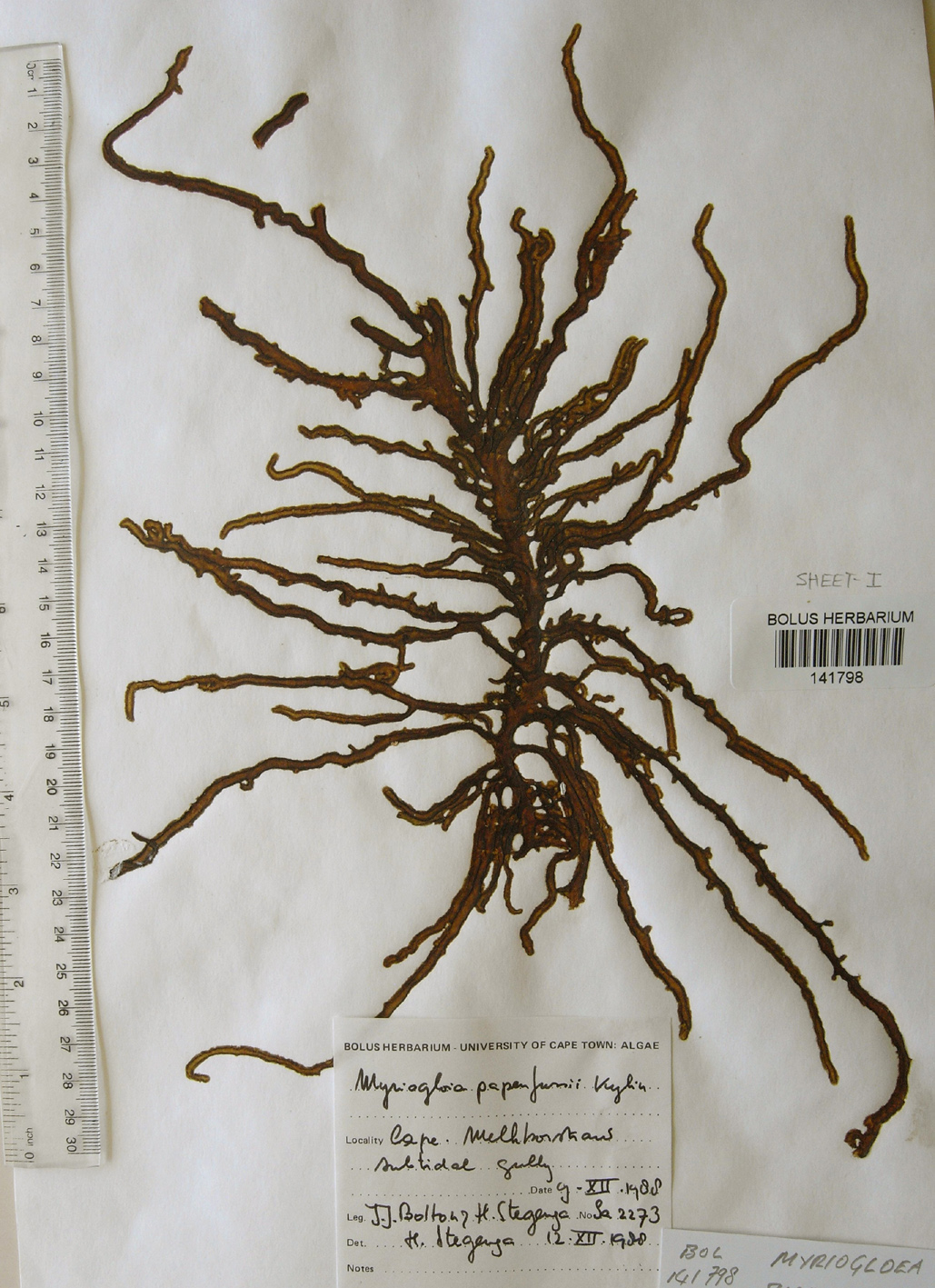
Myriogloea papenfussii, west coast specimen.
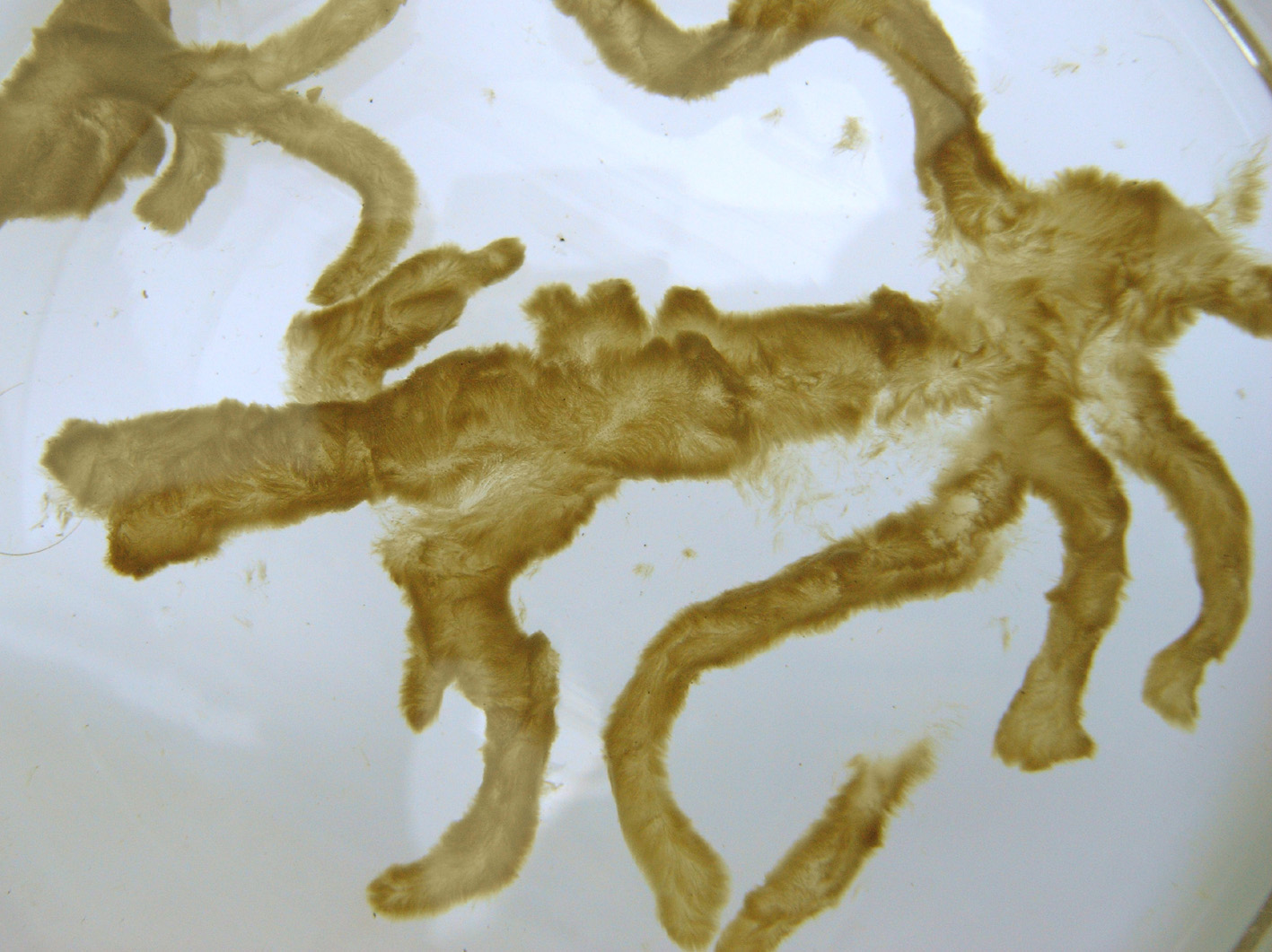
Myriogloea papenfussii, fresh material, 6 cm-long part of thallus showing loose, soft texture.
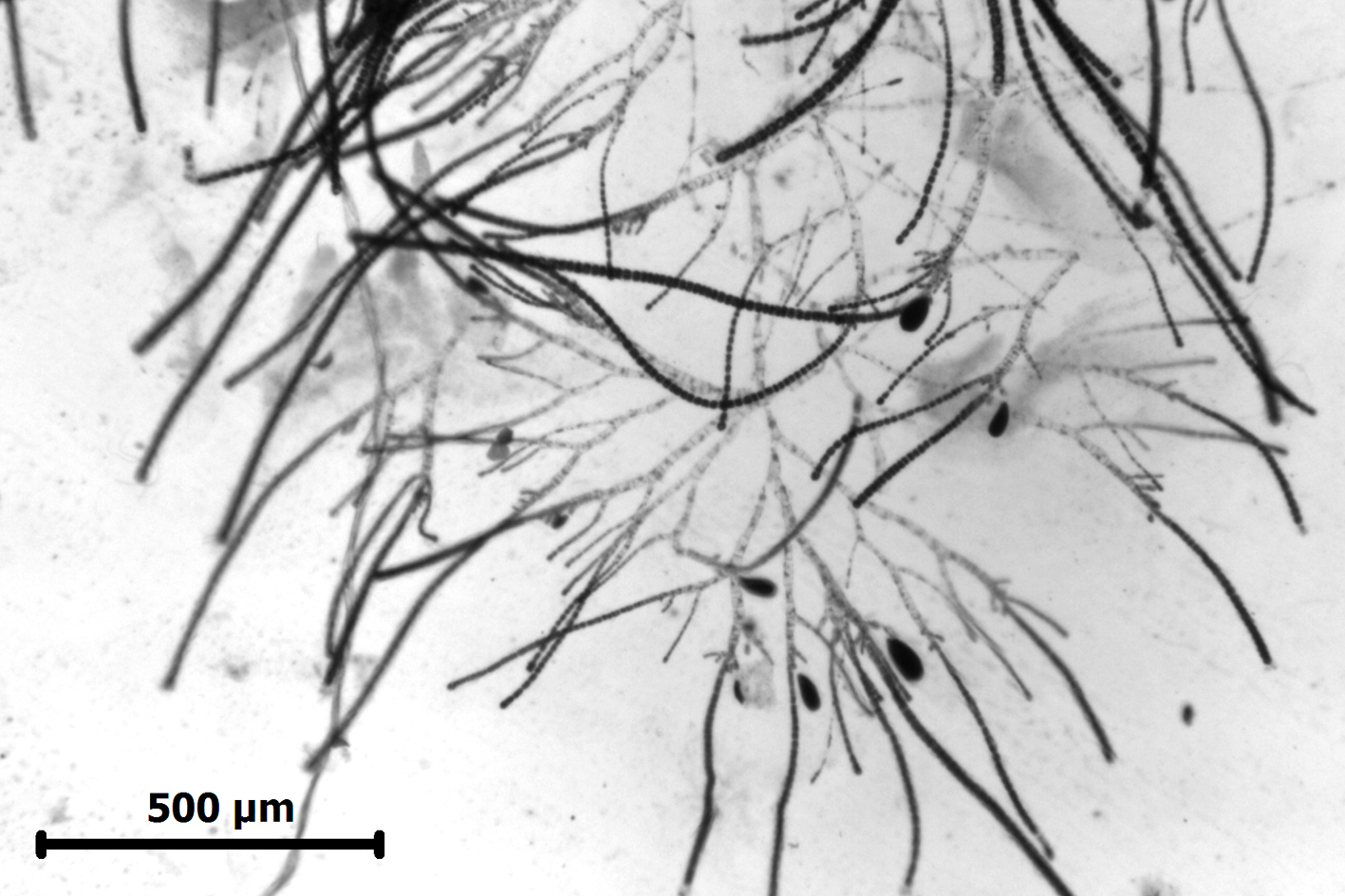
Myriogloea papenfussii, squash preparation – cortical filaments.
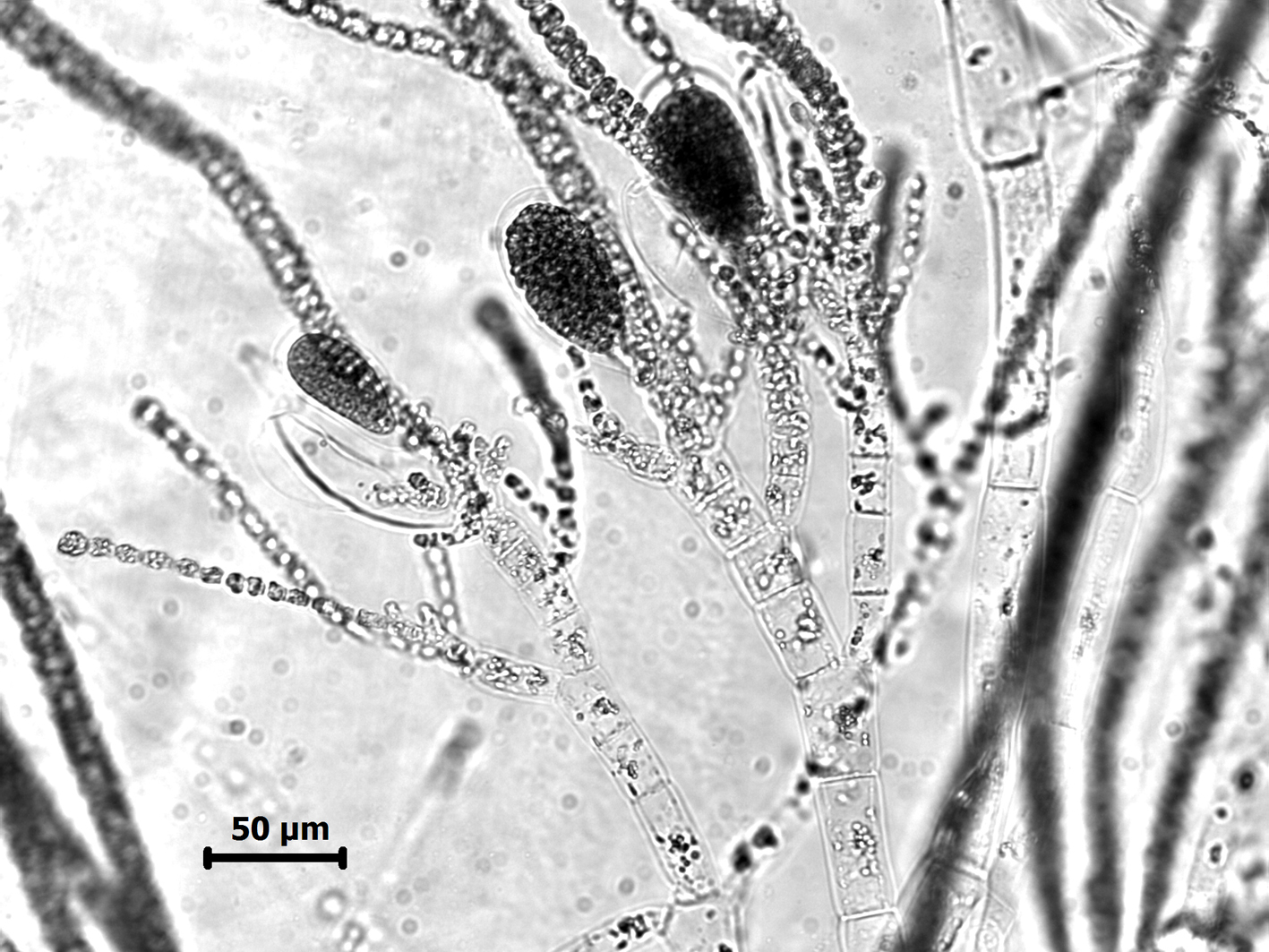
Myriogloea papenfussii, unilocular sporangia.
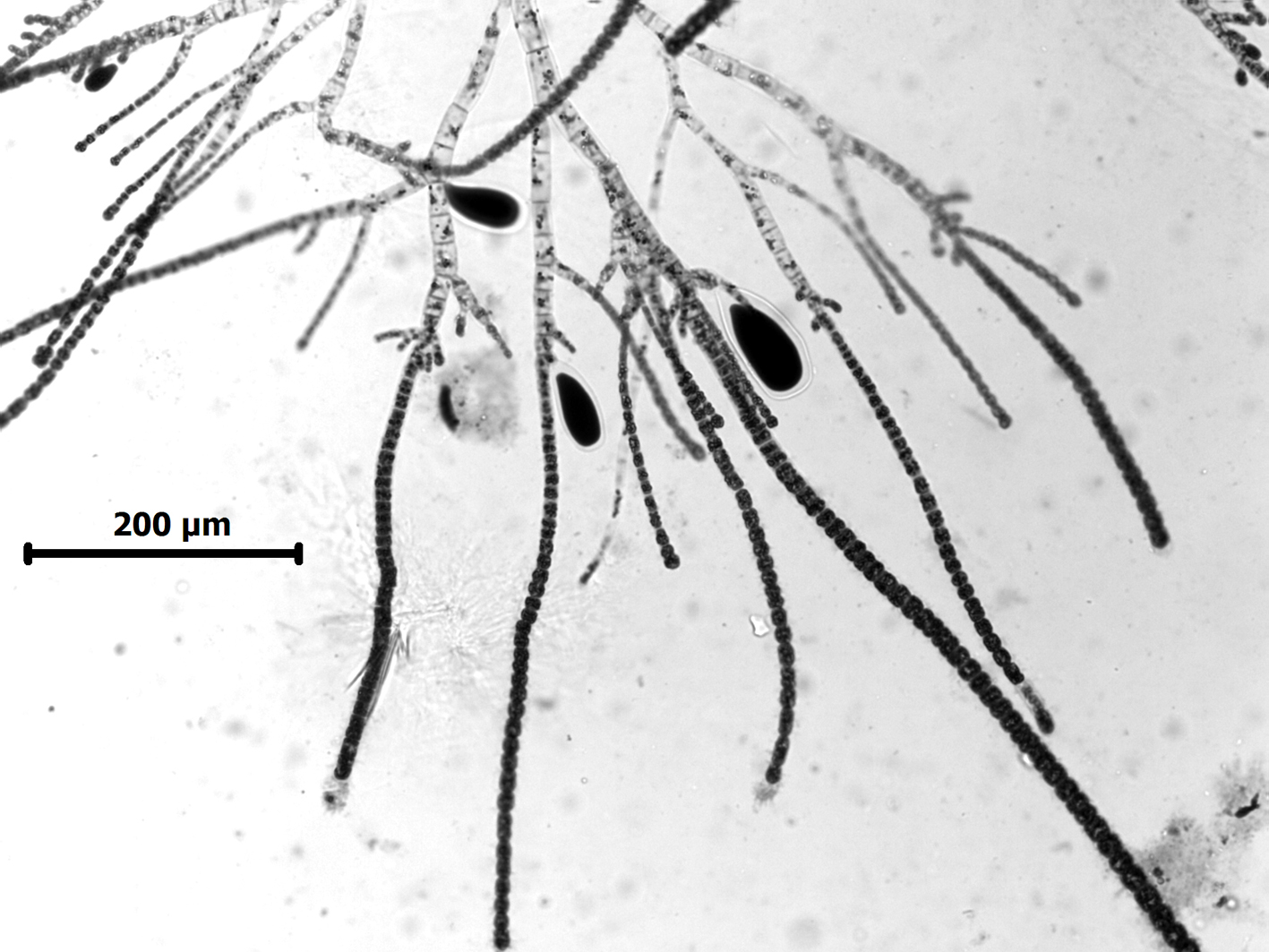
Myriogloea papenfussii, unilocular sporangia and assimilatory filaments.
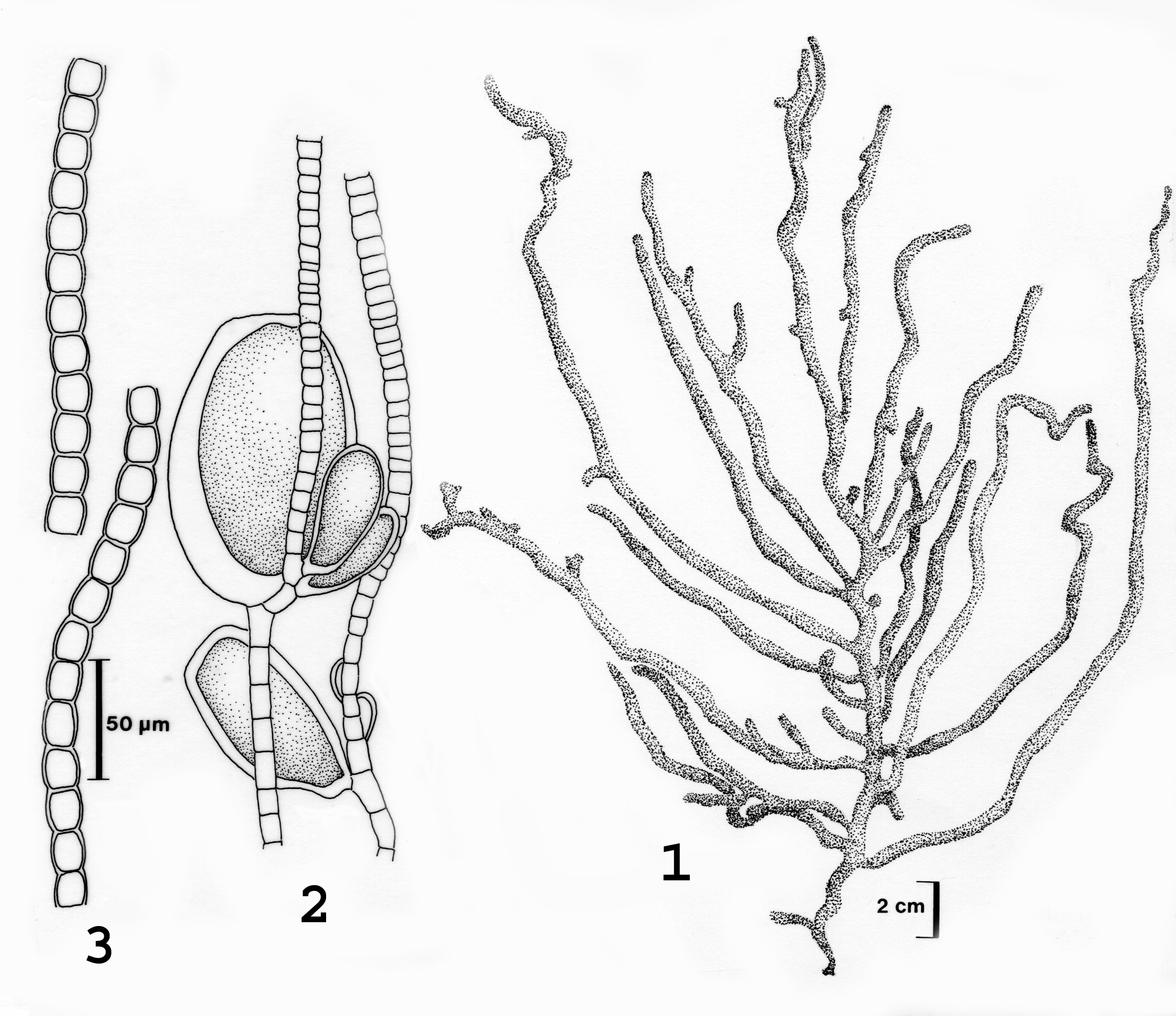
Myriogloea papenfussii : 1. Habit. 2. Unilocular sporangia. 3. Detail of assimilatory filaments. From Stegenga et al. (1997).
References Myriogloea
Guiry, M.D. & Guiry, G.M. 2011. AlgaeBase. World-wide electronic publication, National University of Ireland, Galway. http://www.algaebase.org; searched June 2011.
Kylin, H. (1940). Die Phaeophyceenordnung Chordariales. Acta Universitatis Lundensis 36(9): 1-67, 30 figs.
Silva, P.C., Basson, P.W. & Moe, R.L. (1996). Catalogue of the benthic marine algae of the Indian Ocean. University of California Publications in Botany 79: 1-1259.
Stegenga, H., Bolton, J.J. and R. J. Anderson. 1997. Seaweeds of the South African west coast. Contributions from the Bolus Herbarium 18: 655 pp.
Cite this record as:
Anderson RJ, Stegenga H, Bolton JJ. 2016. Seaweeds of the South African South Coast.
World Wide Web electronic publication, University of Cape Town, http://southafrseaweeds.uct.ac.za; Accessed on 07 December 2025.